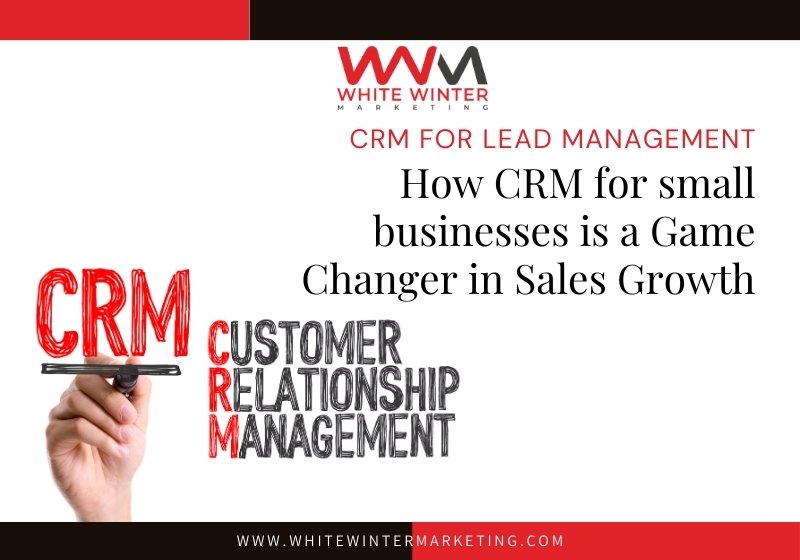As customer tastes, markets, and technologies evolve ever-increasingly, businesses must constantly adapt to remain competitive. Once a trusted brand identity fails to resonate with new audiences or leads to stagnating growth, it may be time to rethink your brand strategy.
But when is the optimal time for a rebrand, and how can it be executed successfully? This article explores the signs that indicate when rebranding your business is necessary, as well as best practices for implementing changes that refresh your brand for the future.
Reasons to Consider Rebranding
While an established brand identity provides stability, it can also avoid becoming outdated if it remains the same for too long. Here are some critical indicators for branding your business to gain benefits:
- Changes in Target Audience: It may be time for a reset if your customers or clientele have shifted significantly since your initial branding efforts. For example, pivoting to appeal to younger demographics.
- Declining Sales or Engagement: Stagnating website traffic, social following, or sales volume over time could suggest your brand no longer appeals as strongly. A refresh may reinvigorate interest.
- Mergers or Acquisitions: Major business models, ownership, or product line shifts warrant an updated image. Maintaining a cohesive brand is essential through transitions.
- Negative Brand Associations: Some industries or brand mishaps can leave problematic impressions if not adequately addressed. Rebranding offers a clean state to win back trust.
- Market Saturation: In highly competitive fields, differentiation matters more each year. Redefining your brand story prevents sameness from hindering growth.
- New Brands Emerge: Staying ahead of trends means reinventing before newer entrants outshine you. Disruption is constant—a proactive rebrand keeps you future-focused.
Brand Mapping to Gauge Change Needs
Before embarking on full-scale branding of your business efforts, carefully map your existing brand identity versus current conditions. This involves auditing trademarks, logos, messaging, visuals, websites, and more through the lenses of:
- Target Audience Fit: Does your brand still appeal to—and attract—its desired customers? Changes in demographics, culture, or industry dynamics impact relevance over time.
- Competitive Set: How do your offerings and image compare to those of newer market entries? Opportunities may exist to carve out new ground versus mimicking competitors.
- Brand Values Alignment: Internal and external shifts can cause mission drift from your original vision. Revisiting core principles ensures strategic coherence.
- Tone and Message Consistency: Consistent branding across mediums maintains top-of-mind status. Inconsistencies undermine your image and credibility over the long term.
Brand Mapping highlights weak links between your articulated identity and present-day realities. These disconnects often signal that a rebrand could re-energize your positioning in the eyes of priority audiences. Tactful evaluation is the first step toward prudent change.
How Do You Know If Rebranding Is Right for Your Business?
Carefully weigh the risks and benefits of undertaking a rebrand using this checklist:
Potential Benefits – Does rebranding offer opportunities to:
- Better meet customer needs?
- Increase brand differentiation in a crowded market?
- Expand your target demographic.
- Support growth into new geographic areas or product lines?
- Repair a damaged brand image?
- Reflect substantive internal changes in leadership, culture, or business practices.
Risk Factors – Does your business lack:
- Adequate resources (both budget and staff bandwidth) to undertake rebranding thoughtfully?
- Is consumer awareness and loyalty strong enough to carry your brand through temporary disruption during a transition?
- Are you committed at staff and executive levels to embody and communicate branding realignment internally and externally?
If rebranding your business can substantively benefit your business without posing undue risks, forge ahead to the rebrand planning stage. Structure the process around achieving business goals so branding evolves in strategic lockstep with market growth and shifts in company direction.
How to Craft a Business Rebranding Strategy?
Rebranding only succeeds when grounded in strategy – thoughtful research, precise positioning, and an actionable roadmap for rolling out changes. Follow these business branding tips as you craft a new strategy.
Set Strategic Business Goals
Rather than starting with cosmetic changes, anchor rebranding around business objectives. Ask yourself:
- What tangible outcomes do we want from this rebrand, e.g., expanding market share, boosting repeat sales, and changing consumer perceptions?
- How will fulfilling those goals grow our enterprise value?
These grounds the rebrand in overarching strategy and focus branding choices on moves likely to achieve established objectives. Revisit goals at each stage of rebrand development to ensure alignment.
Audit Your Current Brand
Take an objective look at what your current branding conveys across touchpoints like logo and tagline, messaging and voice, visual identity, customer service, and more. Assess strengths to potentially retain as well as disconnects needing realignment, such as:
- How we describe our brand promise vs. actual customer experience.
- Who we aim to serve vs. our natural consumer base.
- Values we claim to espouse vs. business practices.
Input from leaders across the company provides a helpful 360-degree perspective, while customer surveys and focus groups offer an outside-in view revealing possible blind spots.
Research Your Audience
Get crystal clear on current and desired target consumers through up-to-date market research. Update personas with demographic and psychographic data on factors like:
- Values, attitudes, and lifestyles
- Shopping preferences and patterns
- Pain points and desired solutions
- Objections and barriers to purchase
- Media consumption habits
Quantitative data reveals a shift in buying power and demand useful for repositioning. Use surveys, focus groups, and social listening for deeper insight into evolving expectations and needs.
Analysis reveals whom to focus branding outreach toward and which brand attributes attract their interest and loyalty.
Benchmark Competitors
A branding makeover presents a chance to differentiate from competitors whose messaging may have crept into alignment with yours over time.
Carry out a competitive analysis assessing rivals’:
- Brand personalities and promises to customers
- Pricing and product line strategies
- Marketing and advertising messaging
- Reviews and reputation with consumers
Identifying competitors’ unmet consumer needs and gaps in their brand experience helps shape your value proposition and areas of distinction.
Determine Brand Positioning
Using your research findings, carve out updated brand positioning through a unique brand promise, answering who you serve, what benefit you provide them, and what makes your solution superior. Test language with focus groups to hone an authentic, appealing message with an emotional resonance that sets you apart.
Set Brand Standards
Brand guiding principles, also called brand books or guidelines, explicitly define what your brand stands for to maintain integrity across touchpoints. They guide the expression of your brand consistently in mediums like:
- Messaging framework: personality, voice, tone
- Logo usage
- Color palettes
- Typography
- Image selection
- Packaging
- Retail environments
Getting input from a broad cross-section of staff helps broaden the perspective on how frontline teams want branding to reflect the company and what attracts customer loyalty.
Plan Rebrand Rollout
A detailed roadmap orchestrates the many moving pieces of rebranding across internal and external touchpoints. Identify every area the shift impacts – name, logo, website, signage, uniforms, ads, customer communications, etc. Then, sequence execution for seamless transition of branding elements on launch day.
Schedule sufficient lead time for reprinting collateral, updating online platforms, and adequately briefing staff. Plan announcements through media outreach for public awareness.
Business Rebranding Case Studies
To understand business branding tips, examine real-world examples spanning industries and sizes of efforts. Consider both shining successes and cautionary lessons.
Domino’s Pizza
Known for mediocre quality, this chain conducted one of the boldest turnarounds by openly admitting shortcomings. Ramping up investments in food/service quality led to the “Oh yes we did” campaign that transformed perceptions, regaining lost customers through humility and action.
When competitive pressures mounted, the messaging board shifted its positioning from a technology platform towards community and content-sharing. Refining its visual identity and “the front page of the Internet” tagline resonated more strongly among younger demographics vital to future growth.
Tropicana
Attempting to trendify its orange juice products’ packaging design to attract millennials, this brand faced backlash from loyalists feeling alienated by the changes. The insistence on flash over substance resulted in pulled redesigns and ultimate management replacement to reconcile old and new audiences.
GAP
From the 90s through the mid-2000s, the clothing chain led youth culture trends but gradually lost touch as shoppers’ tastes constantly evolved. A branding overhaul to reconnect with its roots in denim and casual basics has since stabilized sales, showing how agility sustains heritage brands.
Old Spice
Capitalizing on the internet’s rise, this product pioneered viral marketing through quirky commercials personifying its “smell like a man, man” appeal. Refreshing a stodgy reputation for a new generation reversed sliding profits, proving rebranding can sometimes mean more than a total overhaul.
Regardless of the industry or company phase, the intent remains to build brands people love. Careful planning, audience understanding, and authentic execution are hallmarks of branding your business that successfully positions businesses for ongoing prosperity.
Refreshing with Boldness and Care
Rebranding your business occasionally becomes prudent to stay relevant in continuously evolving business landscapes. However, a lack of strategic foresight or half-hearted implementation may backfire.
By understanding appropriate triggers, investing in extensive groundwork, and guiding the transition comprehensively, companies position their rebranded identity for long-term success. If done right, rebranding can pay rich rewards to those willing to take the risks.
At WhiteWinterMarketing, we help our clients reinvent their branding. Connect with us at digital@whitewintermarketing.com to learn about your brand’s growth.
About the Author:
Swetha Prasanna Gangavarapu is a Branding Consultant for B2B Businesses and a Personal Branding Consultant for Corporate Professionals and Leaders. She is the author of LinkedIn Personal Branding Book: 365 Days 365 Posts. She helps her clients reinvent their brand avatars and takes them closer to their target audience. You can connect with her on LinkedIn, email at consultwithswetha@gmail.com, or her website swethaprasanna.com.






